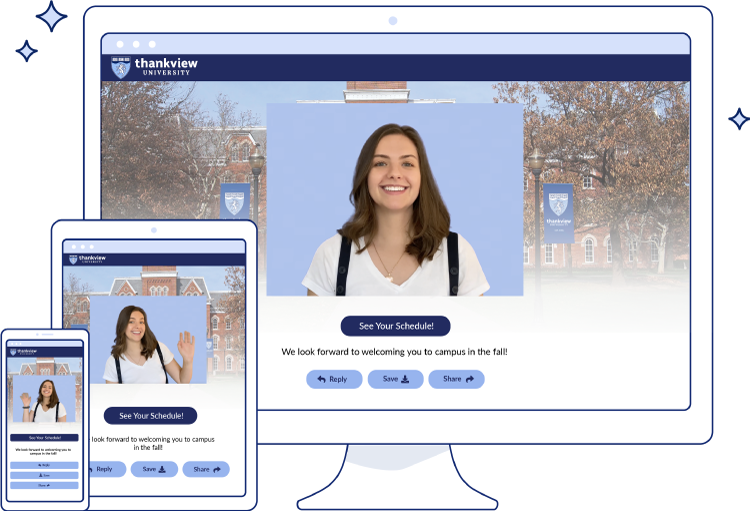Why Don’t All Development Directors Pursue Major Gifts?
Major gifts from individuals are the best bang for your fundraising buck, the category that offers the highest yield for the time you spend cultivating them, and yet, a lot of nonprofits don’t have a major gifts program. Why not?
This past summer, I conducted a survey of Development Directors and discovered something interesting. A lot of folks are intimidated or mystified by major gifts. With so much pressure to raise-money-right-now and so much on their plates, it seems simpler to leave major gifts for another day.
You can’t do this if you want to fully fund your mission, but I understand that getting over the emotional barriers can be hard. Here are three big reasons the survey revealed about why Development Directors skip major gifts.
“I Don’t Know How to Do That Kind of Fundraising.”
Can we talk about the elephant in the room?
Sometimes, I find that fundraisers themselves don’t entirely understand the step-by-step process of individual donor cultivation. This becomes a two-fold problem: they can’t do it, and therefore, they struggle to lead their board members to do it.
One survey respondent explained: “I understand how to fill out applications that ask for money or talk about sponsorships with corporate reps, but when it comes to talking with people on an individual basis, it’s hard to understand the path forward. It’s not as defined.”
Until you understand the step-by-step process of major gift cultivation, it does seem ill-defined and mysterious. You need a specific plan in place to lead your Top 30 individual donors to their best gift this year, and without it, it’s likely you’re leaving money on the table. Once you have that plan, you’ll start reaching goals.
Contrary to what you might think, the most successful fundraisers don’t have to be expert at “working the room.” They’re the ones who work diligently, step-by-step. It’s plan + discipline + habits. That’s where the magic happens.
“I’m on My Own.”
Fundraising can be a lonely job, especially if you’re the organization’s primary fundraiser, without a staff. Do you feel like everyone has opinions and expectations for what you should be doing, but nobody is actually “in it” with you? You’re not alone. In fact, I’d say 90% of the nonprofit students I work with (a ton of executive directors!), report feeling the same way.
What’s more, Development Directors can be uniquely stuck in the middle. You’ve got all the responsibility for fundraising, but without board and executive director participation, you’re limited in how much you can accomplish.
If you have an executive director who hates fundraising and hired you so they “wouldn’t have to do it,” you know what I’m talking about. Boards who don’t understand fundraising logistics can expect miracles, goals and deadlines provide constant pressure, and Development Directors can be afraid to ask for support or training, lest they ruin their credibility by admitting there are things they don’t know.
So, who do you turn to?
You need someone on your side. A teacher, mentor, or coach can really help you navigate these relationships and roles, while making you feel much less alone.
I’ve been called a therapist more times than I can count. Obviously, I’m not a real therapist.
What I think that means is I’m a third-party, listening ear, and ‘tell you you’re-not-crazy and there is a way upward’ person.
Sometimes my students just need to hear there is a plan and way to get through this. Because there is!
“I Don’t Want to Be Salesy!”
One survey participant said “I feel like I can handle myself once I’m in the meeting, because that feels like the relationship part, but getting the meetings feels like the salesy part. And that feels scary.”
A lot of people I talk to have a fear of being “salesy” when they’re fundraising. My students move from dread to dollar when they learn two things:
- How to create great donor experiences that move a prospect to a yes.
- How to lead board members in a way that prioritizes their time on the size gifts they need.
Creating donor experiences has a lot to do with gratitude and exceeding expectations, not being salesy. If you don’t have time for warm, appreciative donor journeys, you need to reevaluate how you’re spending your time.
When my students stop wasting time on the activities that don’t offer sufficient ROI, they see results. They are confident relationship builders. And it pays off: my students without any previous fundraising experience regularly secure 4-, 5-, and 6- figure gifts.
Development Directors, You Can Do This
If any of these concerns have kept you from major gifts fundraising, let today be the day you change your mind. You’re not alone, you can learn how to do this, and the results are too good to miss out on because you’re intimidated.
If you want to read the results of the survey of Development Directors Sherry facilitated this summer you can get that here: https://www.quamtaylor.com/ddsurvey
If you want to see the course that was created as a result of the survey you can review that here: https://www.quamtaylor.com/boardonboard (Use CODE: THANKVIEW for 35% off)
